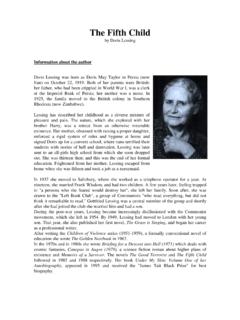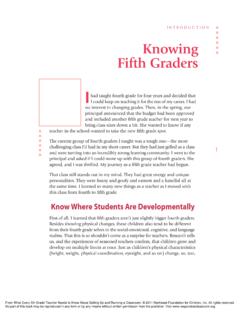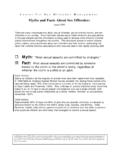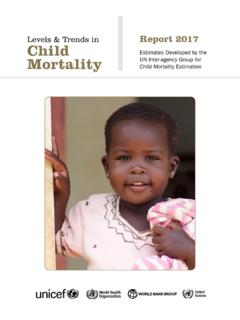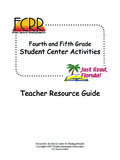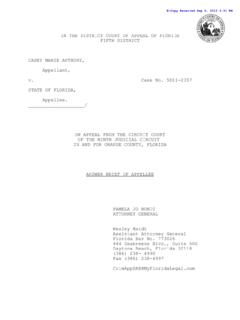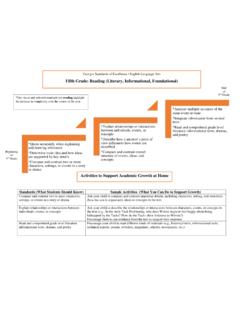Transcription of Child Abuse and Neglect Fatalities 2016: Statistics and ...
1 Children s Bureau/ACYF/ | Email: | AND TRENDSA pril 2017 WHAT S INSIDEI ntroduction How many children die each year from Child Abuse and Neglect ? What groups of children are most vulnerable?How do these deaths occur? Who are the perpetrators? How do communities respond to Child Fatalities ? How can these Fatalities be prevented? Summary References Additional resourcesChild Abuse and Neglect Fatalities 2015: Statistics and InterventionsDespite the efforts of the Child protection system, Child maltreatment Fatalities remain a serious Although the untimely deaths of children due to illness and accidents are closely monitored, deaths that result from physical Abuse or severe Neglect can be more difficult to track. This factsheet describes data on Child Fatalities and how communities can respond to this critical issue and, ultimately, prevent these deaths. Unless otherwise noted, Statistics in this factsheet are taken from the Children s Bureau s Child Maltreatment 2015 (see ) and refer to Federal fiscal year (FFY) 2015.
2 Statistics refer to the year in which the deaths were determined to be from maltreatment; in some cases, this may have been different from the year in which a Child actually This factsheet provides information regarding Child deaths resulting from Abuse or Neglect by a parent or a primary caregiver. Other Child homicides, such as those committed by acquaintances and strangers, and other causes of death, such as unintentional injuries, are not discussed here. For information about leading causes of Child deaths nationally from 1999 to 2015, visit the Centers for Disease Control and Prevention website at Statistics on Child homicide from 1980 to 2011 can be obtained from the Department of Justice at and 2017h tsl :h/ihw. defag tsl s72 This material may be freely reproduced and distributed. However, when doing so, please credit Child Welfare Information Gateway. This publication is available online at Many Children Die Each Year From Child Abuse or Neglect ?
3 According to data from the National Child Abuse and Neglect Data System (NCANDS), 49 States reported a total of 1,585 Based on these data, a nationally estimated 1,670 children died from Abuse or Neglect in FFY 2015, which is percent more than in 2011. This translates to a rate of children per 100,000 children in the general population and an average of nearly five children dying every day from Abuse or Neglect . NCANDS defines Child fatality as the death of a Child caused by an injury resulting from Abuse or Neglect or where Abuse or Neglect was a contributing factor. The number and rate of Fatalities reported by States have fluctuated during the past 5 years. The national estimate is influenced by which States report data as well as by the Census Bureau s Child population estimates. Some States that reported an increase in Child Fatalities from 2011 to 2012 attributed it to improvements in reporting after the passage of the Child and Family Services Improvement and Innovation Act ( 112 34), which passed in 2010.
4 Most data on Child Fatalities come from State Child welfare agencies. However, States may also draw on other data sources, including health departments, vital Statistics departments, medical examiners offices, law enforcement, and fatality review teams. This coordination of data collection contributes to better estimates. Many researchers and practitioners believe that Child Fatalities due to Abuse and Neglect are underreported (Schnitzer, Gulino, & Yuan, 2013). The following issues affect the accuracy and consistency of Child fatality data: Variation among reporting requirements and definitions of Child Abuse and Neglect and other terms Variation in death investigation systems and training Variation in State Child fatality review and reporting processes The length of time (up to a year in some cases) it may take to establish Abuse or Neglect as the cause of death Inaccurate determination of the manner and cause of death, which results in the miscoding of death certificates and includes deaths labeled as accidents, sudden infant death syndrome, or undetermined that would have been attributed to Abuse or Neglect if more comprehensive investigations had been conducted Limited coding options for Child deaths, especially those due to Neglect or negligence, when using the International Classification of Diseases to code death certificates The ease with which the circumstances surrounding many Child maltreatment deaths can be concealed or rendered unclear Lack of coordination or cooperation among different agencies and jurisdictionsA report by the Government Accountability Office (2011)
5 That assessed NCANDS data, surveys and interviews with State Child welfare administrators and practitioners, and site visit reports from three States suggests that facilitating the sharing of information and increased cooperation among Federal, State, and local agencies would provide a more accurate count of maltreatment deaths. A study of Child Fatalities in three States found that combining at least two data sources resulted in the identification of more than 90 percent of Child Fatalities ascertained as being due to Child maltreatment (Schnitzer, Covington, Wirtz, Verhoek-Oftedahl, & Palusci, 2008).2 The Children s Bureau received data from 49 States. Of those States, 45 reported case-level data on 1,327 Fatalities , and 40 States reported aggregate data on 258 2017h tsl :h/ihw. defag tsl s73 This material may be freely reproduced and distributed. However, when doing so, please credit Child Welfare Information Gateway. This publication is available online at than 1 to 3 to 7 to 11 to 15 and 17 , unknown, and age Abuse and Neglect Fatality Victims by Age, AbusePsychologicalAbuseMedical NeglectOtherPhysical AbuseNeglectChild Abuse and Neglect Fatalities by Reported Maltreatment Type, 2015 What Groups of Children Are Most Vulnerable?
6 Three-quarters ( percent) of Child Fatalities in FFY 2015 involved children younger than 3 years, and children younger than 1 year accounted for percent of all Fatalities . See exhibit 1 for additional data about the age of fatality victims. Young children are the most vulnerable for many reasons, including their dependency, small size, and inability to defend Do These Deaths Occur?Fatal Child Abuse may involve repeated Abuse over a period of time, or it may involve a single, impulsive incident ( , drowning, suffocating, shaking a baby). In cases of fatal Neglect , the Child s death results not from anything the caregiver does; rather it results from a caregiver s failure to act. The Neglect may be chronic ( , extended malnourishment) or acute ( , an infant who drowns after being left unsupervised in the bathtub). In 2015, percent of children who died from Child maltreatment suffered Neglect either alone or in combination with another maltreatment type, and percent of children who died suffered physical Abuse either alone or in combination with other maltreatment.
7 Medical Neglect either alone or in combination with another maltreatment type was reported in percent of Fatalities . See exhibit 2 for additional information about Fatalities by maltreatment 2017h tsl :h/ihw. defag tsl s74 This material may be freely reproduced and distributed. However, when doing so, please credit Child Welfare Information Gateway. This publication is available online at Are the Perpetrators?In 2015, parents acting alone or with another parent were responsible for percent of Child Abuse or Neglect Fatalities . More than one-quarter ( percent) of Fatalities were perpetrated by the mother acting alone, percent were perpetrated by the father acting alone, and percent were perpetrated by the mother and father acting together. Nonparents (including kin and Child care providers, among others) were responsible for percent of Child Fatalities , and Child Fatalities with unknown perpetrator relationship data accounted for percent of the Do Communities Respond to Child Fatalities ?
8 The response to Child Abuse and Neglect Fatalities is often hampered by inconsistencies and other issues, including the following: Underreporting of the number of children who die each year as a result of Abuse or Neglect Lack of consistent standards for Child autopsies or death investigations Varying investigation roles of Child protective services (CPS) agencies in different jurisdictions Uncoordinated, non-multidisciplinary investigations Medical examiners or elected coroners who do not have specific Child Abuse and Neglect training To address some of these issues, multidisciplinary and multiagency Child fatality review teams have emerged to provide a coordinated approach to understanding Child deaths, including deaths caused by religion-based medical Neglect . The development of these teams was further supported in an amendment to the 1992 reauthorization of the Child Abuse Prevention and Treatment Act (CAPTA), which required States to include information on Child death review (CDR) in their program plans.
9 Many States received initial funding for these teams through Children s Justice Act grants awarded by the Administration on Children, Youth and Families of the Department of Health and Human Services (HHS). Child fatality review teams, which exist at the State, local, or combination State/local levels in every State plus the District of Columbia,3 are composed of prosecutors, coroners or medical examiners, law enforcement personnel, CPS workers, public health-care providers, and others. Child fatality review teams respond to the issue of Child deaths by improving interagency communication, identifying gaps in community Child protection systems, and acquiring comprehensive data that can guide agency policy and practice as well as prevention efforts. The teams review cases of Child deaths and facilitate appropriate follow-up. Follow-up may include ensuring that services are provided for surviving family members, providing information to assist in the prosecution of perpetrators, and developing recommendations to improve Child protection and community support Alabama, Alaska, Arizona, Arkansas, California, Colorado, Connecticut, Delaware, Florida, Georgia, Hawaii, Idaho, Indiana, Iowa, Kentucky, Louisiana, Maine, Maryland, Massachusetts, Michigan, Minnesota, Mississippi, Missouri, Montana, Nebraska, Nevada, New Hampshire, New Jersey, New Mexico, New York, Ohio, Oklahoma, Oregon, Pennsylvania, Rhode Island, South Carolina, South Dakota, Tennessee, Texas, Utah, Virginia, Washington, West Virginia, Wisconsin, and Wyoming (Source: National Center for Fatality Review and Prevention) 2017h tsl :h/ihw.
10 Defag tsl s75 This material may be freely reproduced and distributed. However, when doing so, please credit Child Welfare Information Gateway. This publication is available online at data show that 49 States have a case-reporting tool for CDR; however, there has been little consistency among the types of information compiled. This contributes to gaps in the understanding of infant and Child mortality as a national problem. In response, the National Center for Fatality Review and Prevention, in cooperation with 30 State CDR leaders and advocates, developed a web-based CDR Case Reporting System for State and local teams to use to collect data and analyze and report on their findings. As of February 2017, 45 States were using the standardized As more States use the system and the numbers of reviews entered into it increase, a more representative and accurate view of how and why children die from Abuse and Neglect will emerge (Palusci & Covington, 2013).










